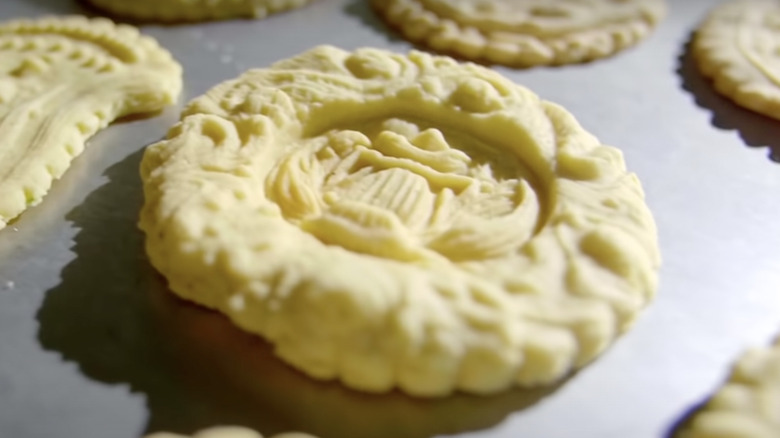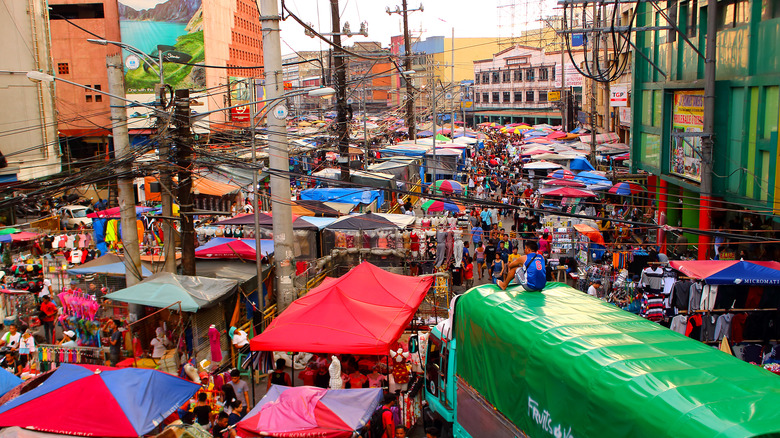Pan De San Nicolas: The Filipino Shortbread Cookie Named For A Patron Saint
If you haven't tried Pan de San Nicolas, you're missing out on a cookie that looks as aesthetically pleasing as it tastes delicious. The Filipino shortbread-like cookie has an intricate design that emulates lattice work with an image of a saint. The design and the name of the cookie honors Saint Nicolas of Tolentino, an Italian-born saint who is believed to have been healed from illness as a child after eating a piece of bread with water. Today, what's considered the oldest cookie in the Philippines, is thought to have healing powers due to origins linked to Saint Nicolas of Tolentino.
You'll appreciate the buttery cookie before you take a bite because of that intricate design. In fact, it's so important that different towns in the Philippines are known to have their own original molds for their version of the cookies. Some of the wooden molds used today are hundreds of years old, and you can tell where the cookies were baked based on the design. Filipino families also have their own molds that are passed down to each generation. The cookies themselves are made out of ingredients local to the country including arrowroot flour, coconut milk, cornstarch, lemon zest, eggs, sugars, and other ingredients you'd expect from most baked goods.
Finding and eating Pan de San Nicolas
The most similar pastry to Pan de San Nicolas are shortbread cookies, but thinner depending on the type you're used to eating. It has a buttery texture thanks to its unsalted butter and flours commonly used in the recipe. The cookie gets its sweetness from granulated sugar, coconut milk, and more layers of flavor from the lemon zest. The dough is placed in those coveted wooden molds, pressed into a cookie with the embossed design, and baked.
Where can you grab one of these cookies? If you're in the Philippines around September 10th, you'll find plenty of the cookies at bakeries, street vendors, and shops at various festivals celebrating Saint Nicolas of Tolentino. But you can find them at traditional Filipino bakeries in the country and abroad year-round — just look for that embossed saint on top of the cookie. Some Filipinos say a special prayer when taking a bite of the cookie. Others believe the cookies grow mold in jars that have similar properties to penicillin, hence its healing abilities. Either way, whether you believe in saints or science, your tastebuds will be tantalized by a traditional cookie that holds importance in Filipino culture.

